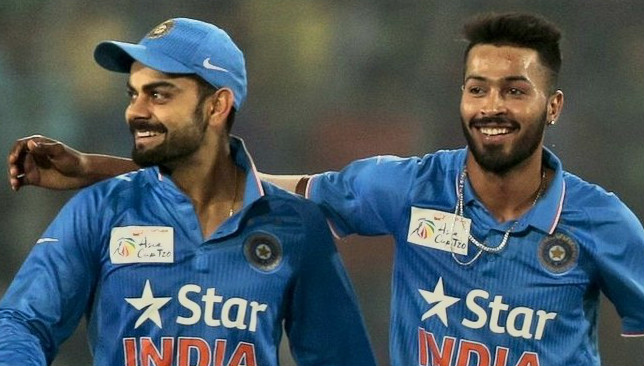
Is India a good T20 side? To answer that question we must understand what makes a team successful in this format, and for that, we must first look into the most critical phases of any T20 game.
The first six overs of powerplay are integral from both a bowling and batting perspective. If batting first, you must look to set the platform for a big total in the powerplay overs. If you’re batting second, you try to break the back of the chase by exploiting the field restrictions. From a bowling perspective, if you take two or more wickets you can inflict serious damage to the opposition’s hope of posting a big total. The brief history of twenty over cricket informs us that if teams lose more than two wickets in the first six overs, they end up on the losing side more often than not.
It’s not about how you start but how you end, and that’s were we need to fast forward to the death overs. The last five overs are as important, if not more, as the first six. Since the format is so short, the game is seldom decided before a serious scuffle in the last few overs. For that very reason, batsmen who can use the long handle effectively in the death overs rake in franchise cricket’s biggest sums of moolah. Remember Brathwaite sealing the World T20 final with four sixes? A game that looked lost until the 20th over was won by some unbelievable hitting. Just like the batsmen, bowlers who can control the last phase of a T20 innings are revered. Finding the block-hole, varying pace and outwitting the batsmen in a game’s dying embers is an art mastered by only a few.
Bearing these critical phases in mind, we can address that opening question. To know where India stands in the shortest format, we must look at our resources for the opening and closing stanzas of a T20 fixture.
[interaction id=”57c51d76ec3cf49f6e036206″]
Right at the top of the order, India has toyed with two opening pairs over the last ten months.Either Shikhar Dhawan or Ajinkya Rahane has partnered Rohit Sharma at the top. Dhawan is an explosive and effective ODI player but somehow he hasn’t managed similar returns in the shortest format. Initially, he was too slow out of the blocks, putting too much pressure on Rohit to up the ante. He did try to address the issue earlier this year but it only temporarily paid off. Even though he was successful in the IPL, it had a lot to do with team-mate David Warner’s sublime form from the other end. Soon he lost his place at the top to Rahane, who is quite similar to Dhawan in his style and approach. Both are grafters by nature and Rahane is ideally suited to play the anchor’s role.
Like Dhawan, Rahane also puts pressure on Rohit to maximise the powerplay overs. This formula works well in ODIs but in high-scoring T20Is, you need to fire from both ends. This is one box that the current Indian team isn’t ticking. As regards to the bowling, Mohammed Shami, Bhuvneshwar Kumar and Jasprit Bumrah have done a decent job but no one has consistently made early breakthroughs and that puts a lot of pressure on India’s spinners to pull things back. As far as the powerplay overs are concerned, Indian team lacks a punch.

In the middle overs, the spinners have almost always managed to restore sanity. Ravi Ashwin, Ravindra Jadeja and Amit Mishra not only provide a couple of breakthroughs but also, keep the scoring rate in check. In fact, whenever Ashwin has taken two or more wickets, India wins 80% of their T20Is. Indian batting is also perfectly suited to make the most of the middle overs and that’s what they generally do. Virat Kohli, Rohit, KL Rahul and Rahane score at or above the industry average rate in this period.
The moment we get into the death overs, we start focusing less on the consistency and more on power-hitting. Since Kohli and Rohit tend to bat deep into the innings quite often, they mask the lack of hitting abilities towards the end. The only Indian in the lower order who comes close to matching the brute strength of West Indians Andre Russell and Kieron Pollard is MS Dhoni, but lately he hasn’t been striking as big or as often as he used to. Yuvraj Singh and Suresh Raina used to play this role to perfection but their absence has left a void. Perhaps, it’s time to go back to Yusuf Pathan or find another hitter. As for the bowling, the arrival of Bumrah has raised the stocks somewhat, for he’s been able to bowl yorkers at will. Ashish Nehra also did a commendable job up until the World T20 but it’s about time that India finds a suitable replacement for the 37-year-old.
One glaring issue that needs to be addressed before anything else is to find a decent all-rounder. In the second T20I against West Indies in Florida, India were forced to play with only five batsmen. Since none of the top six for India bowl, it left Dhoni with only five bowling options and it’s a given that one or two bowlers will have off days. But in order to play an extra bowler, Dhoni had to sacrifice a batsman. It worked alright in the second T20I but it cannot be a long-term solution. The sooner India unearths an all-rounder, the better. Otherwise, India will be falling behind the curve in cricket’s most popular format.